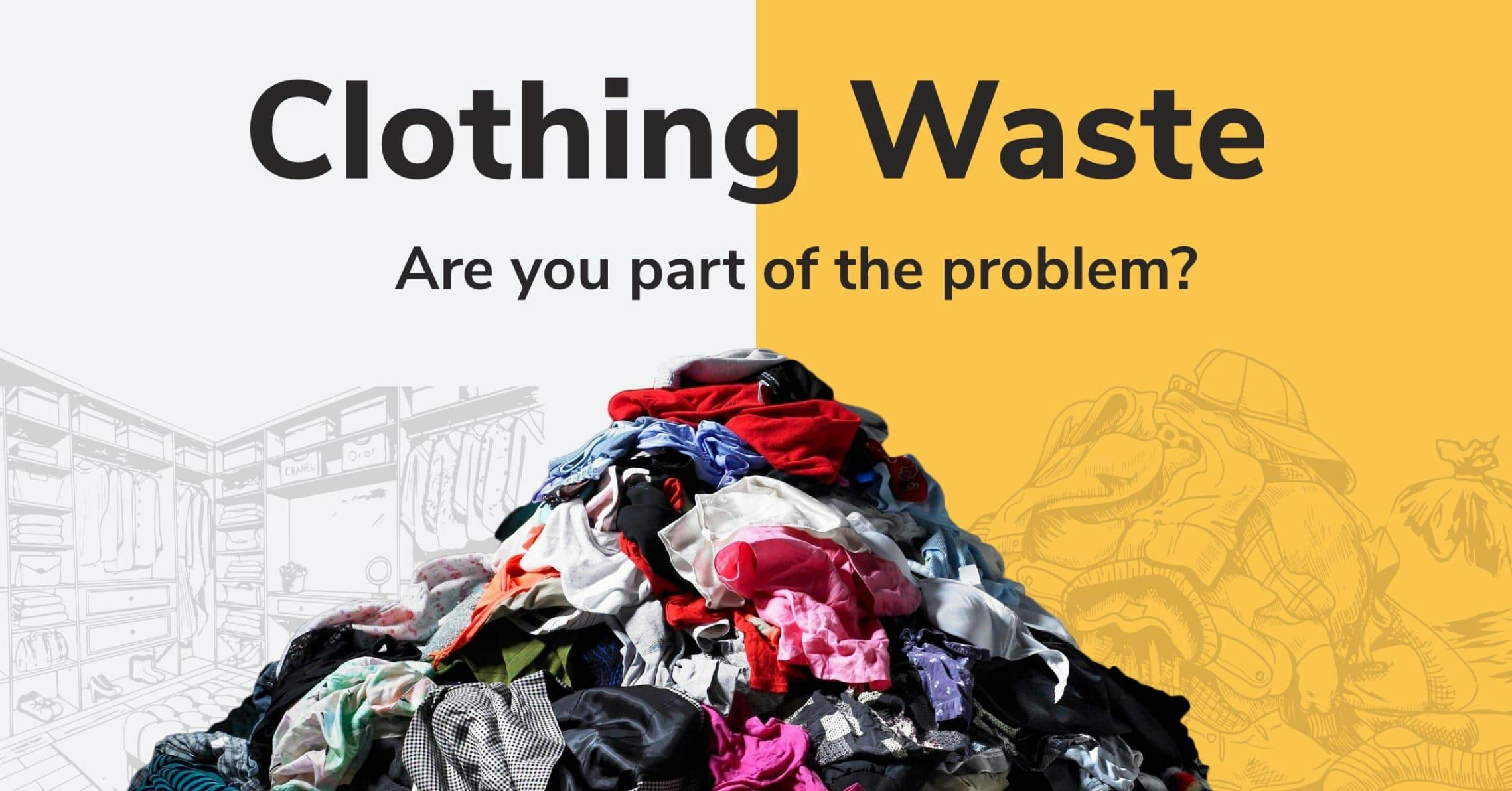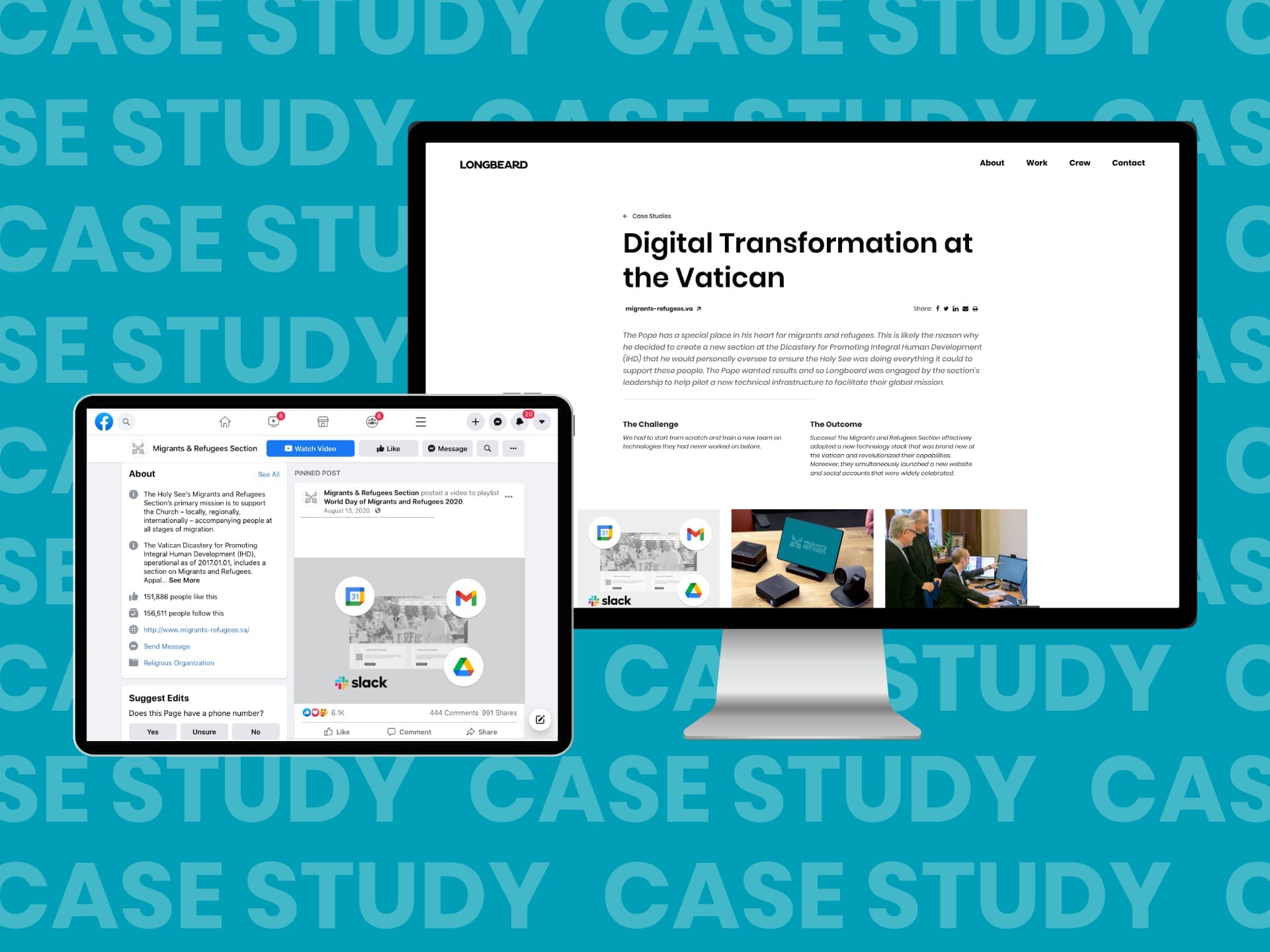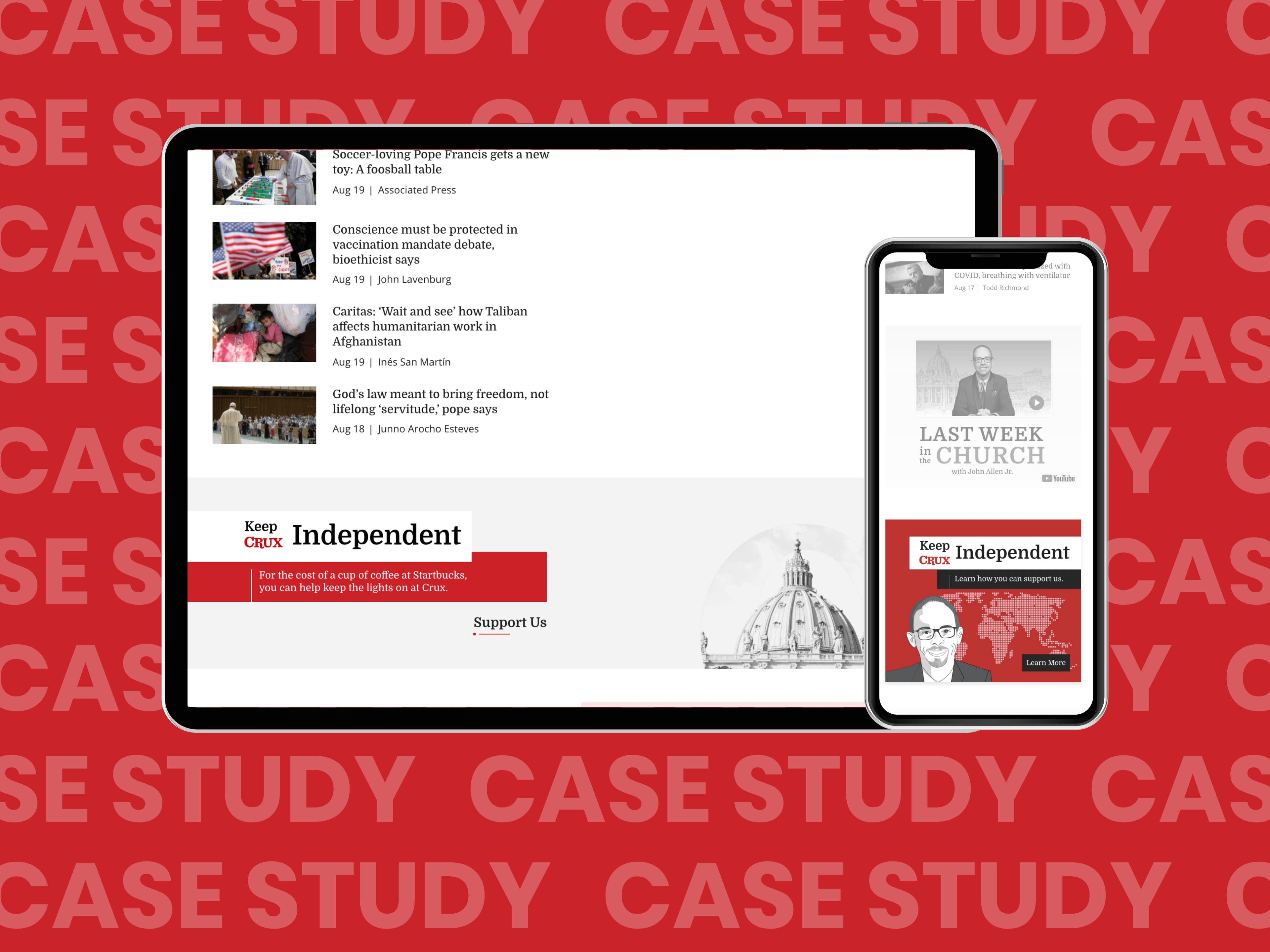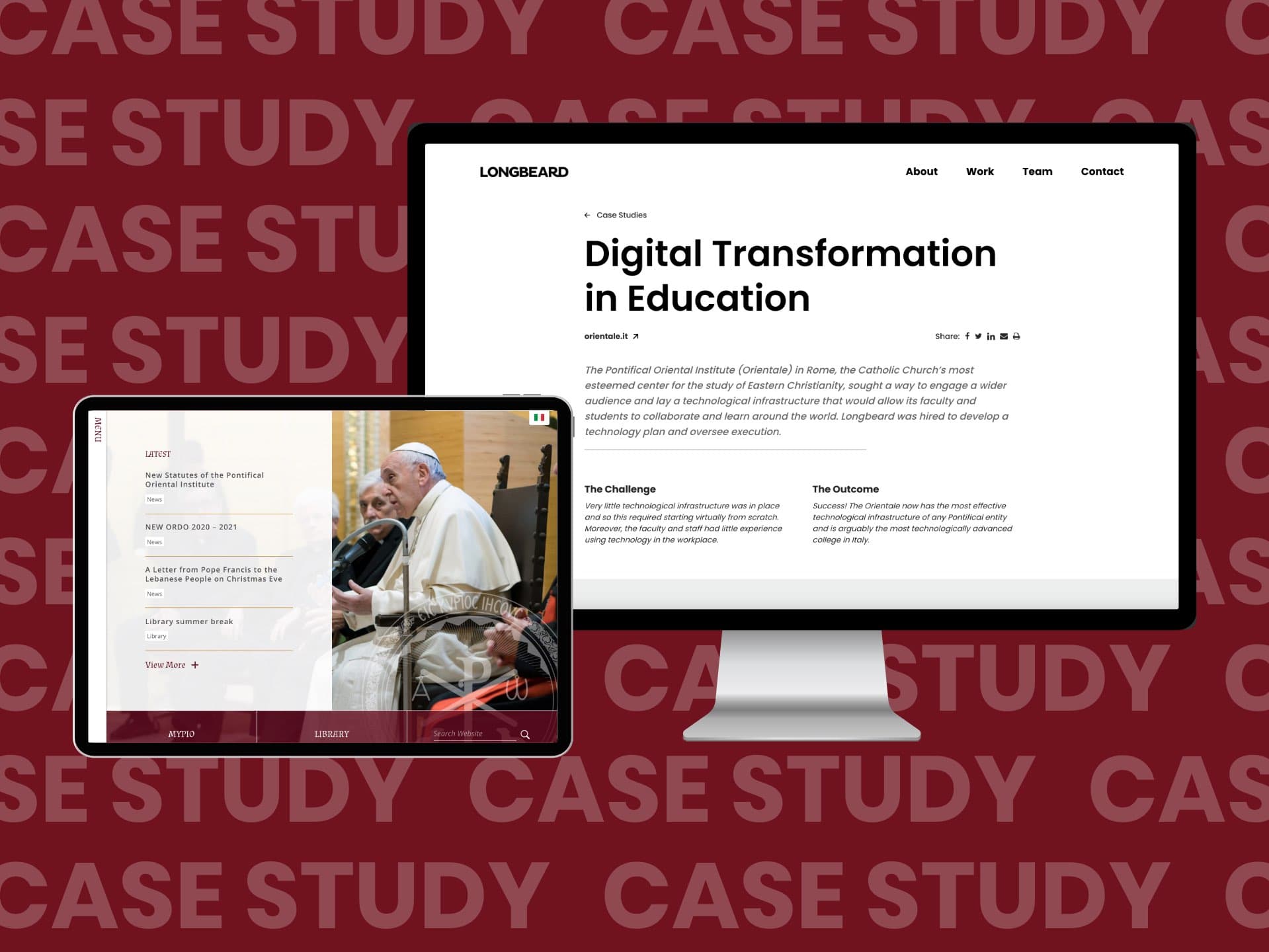Reducing Global Clothing Waste
7.5 billion people on earth consume more than 80 billion new pieces of clothing every year. 400% more than we did two decades ago. Why this over-consumption and if people understood the consequences, would they change their behavior? Halcyon hired us to find out.
The Challenge
Designing a vehicle to inform, convince, and encourage people to change their behavior when it comes to clothing waste.
The Outcome
Shockingly successful. 91% of those surveyed stated they cared more about clothing waste after the survey and 92% said they would be willing to change their habits to be part of the solution.
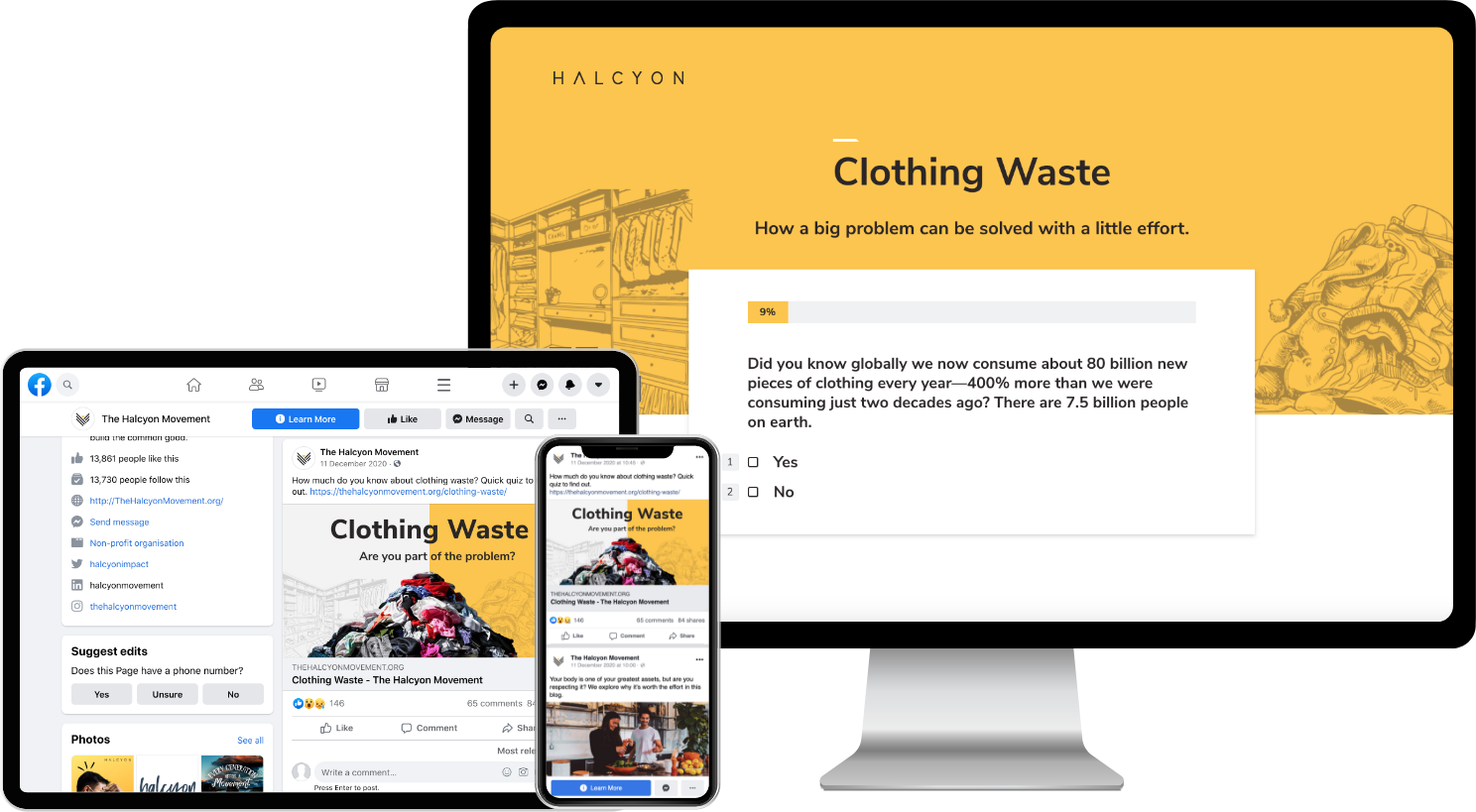
The Objective
Convince people to change their clothing consumption habits in order to reduce the amount of clothing waste they produce.
The Challenges
- Design. Designing a hook that would effectively grab the attention of users on their social feeds and convince them to visit our survey landing page.
- IQ. Knowledge on the topic of clothing waste was hypothesized to be low, necessitating us to educate users.
- Survey. Curating a survey that would appeal to users desire for self-knowledge while at the same time providing them the right facts to either create or alter an opinion on clothing waste.
- Toolkit. Identifying an attractive resource that could serve as a toolkit for people who want to take action and be part of the clothing waste solution.

We figured that convincing someone of the clothing waste problem would be straightforward enough. The part of this assignment we were less confident in was how effective the facts would be in encouraging people to change their consumer behaviours.
Matthew H. Sanders
CEO, Longbeard
The Insights
- Audiences. We tested the clothing waste survey with different audiences to see if the issue was a greater concern to some. It turns out that all audiences resonated with the issue fairly evenly.
- IQ. The respondents demonstrated some awareness of the problem, but all of them indicated they were unaware of the full breadth of the problem.
- Demographics. People from Canada, U.S., Great Britain, and Australia were most engaged by the subject and were also most inclined to change their behavior. Given the amount of clothing waste they collectively create, this was a very positive outcome. Females 55+ constituted the majority of respondents.
- Devices. Over half of respondents did so on their mobile device.
- Costs. $0.14 was the average cost of driving someone to our survey landing page. We were able to get this as low as $0.11 by the end.
- Conversions. 43% of people who landed on the survey landing page went on to complete the survey. On Facebook, the ratio of ‘likes’ on the post to ‘shares’ was very high at 57%. Meaning, the majority of those who engaged the post felt it was also worth sharing with their ‘friends’.
The Outcome
- Changing Minds. 91.5% of respondents stated they care more about the clothing waste problem after what they've learned.
- Changing Behavior. 92.4% of respondents stated they would be more inclined to change the way they live to address the clothing waste problem.
- Action. 74.2% of respondents who completed the survey accessed the post survey toolkit on how to reduce their clothing waste.
